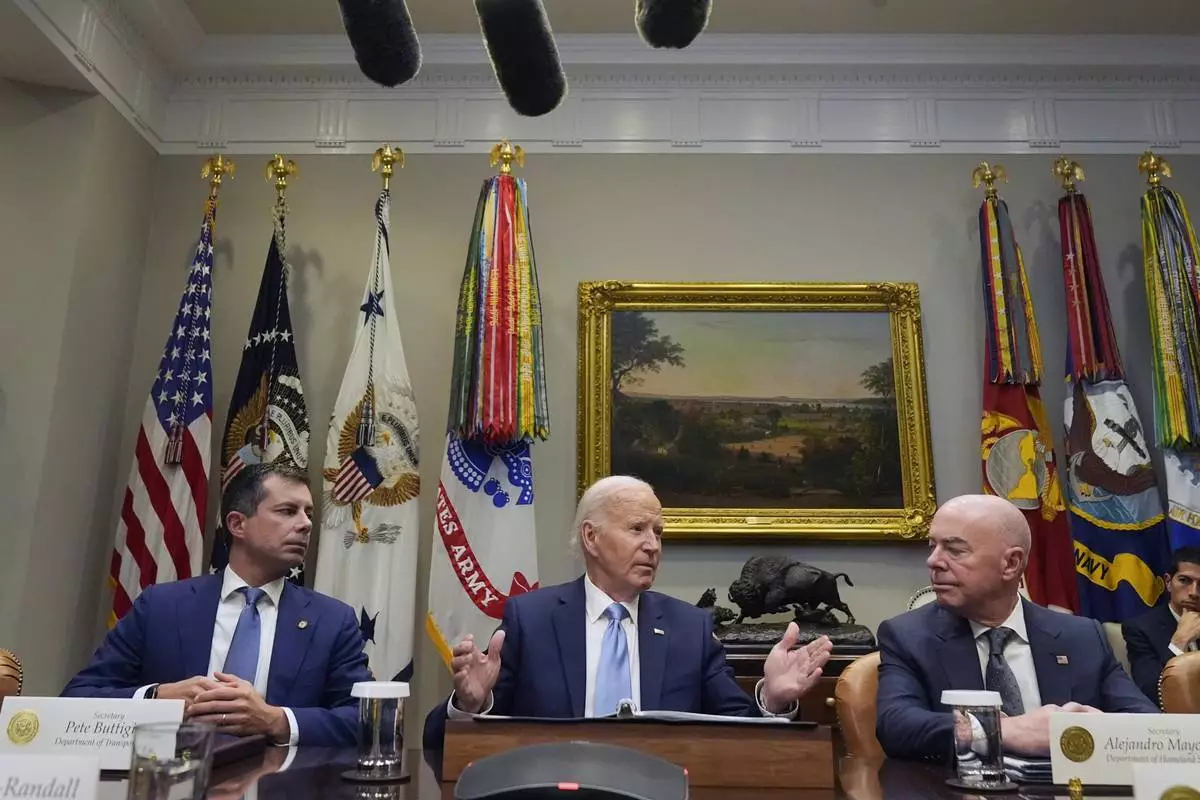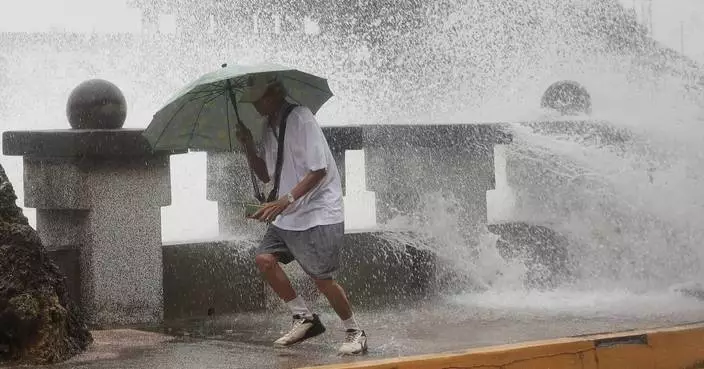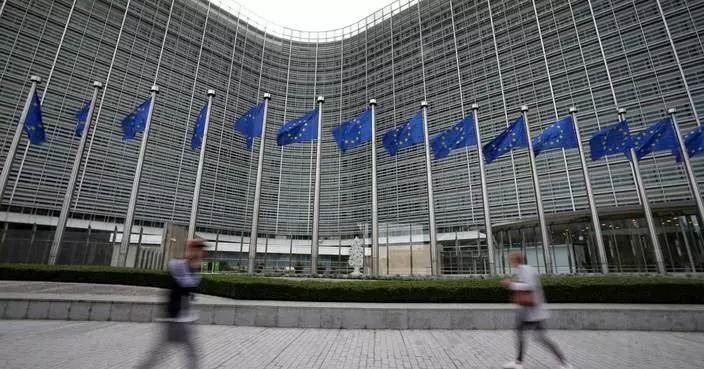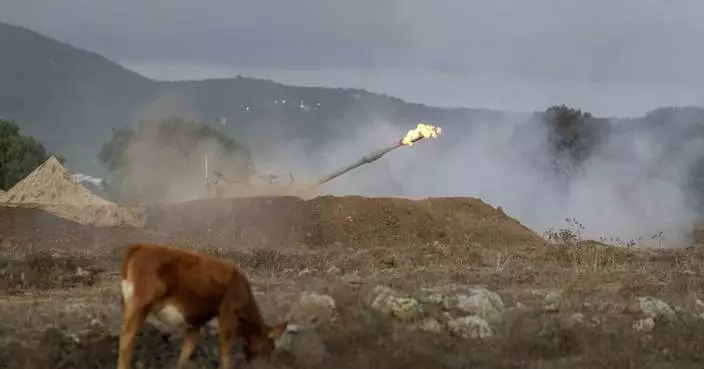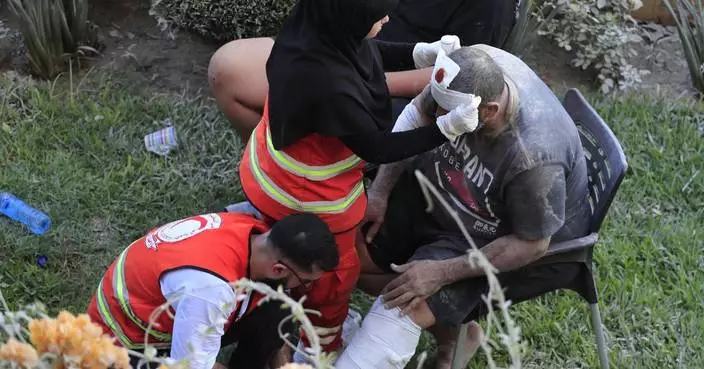Hurricanes in the United States end up hundreds of times deadlier than the government calculates, contributing to more American deaths than car accidents or all the nation's wars, a new study said.
The average storm hitting the U.S. contributes to the early deaths of 7,000 to 11,000 people over a 15-year period, which dwarfs the average of 24 immediate and direct deaths that the government counts in a hurricane's aftermath, the study in Wednesday's journal Nature concluded. Study authors said even with Hurricane Helene's growing triple digit direct death count, many more people will die partly because of that storm in future years.
“Watching what's happened here makes you think that this is going to be a decade of hardship on tap, not just what's happening over the next couple of weeks,” said Stanford University climate economist Solomon Hsiang, a study co-author and a former White House science and technology official.
“After each storm there is sort of this surge of additional mortality in a state that’s been impacted that has not been previously documented or associated with hurricanes in any way,” Hsiang said.
Hsiang and University of California Berkeley researcher Rachel Young looked at hurricane deaths in a different way than previous studies, opting for a more long-term public health and economics-oriented analysis of what's called excess mortality. They looked at states' death rates after 501 different storms hitting the United States between 1930 and 2015. And what they found is that after each storm there's a “bump” in death rates.
It's a statistical signature that they see over and over, Hsiang said. Similar analyses are done for heat waves and other health threats like pollution and disease, he said. They compare to pre-storm times and adjust for other factors that could be causing changes in death rates, he said. Complicating everything is that the same places keep getting hit by multiple storms so there are death bumps upon death bumps.
Just how storms contribute to people's deaths after the immediate impact is something that needs further study, Hsiang said. But he theorized it includes the health effects of stress, changes in the environment including toxins, people not being able to afford health care and other necessities because of storm costs, infrastructure damage and government changes in spending.
“When someone dies a few years after a hurricane hit them, the cause will be recorded as a heart attack, stroke or respiratory failure,” said Texas A&M University climate scientist Andrew Dessler, who wasn’t part of the study but has done similar studies on heat and cold deaths. “The doctor can’t possibly know that a hurricane contributed/triggered the illness. You can only see it in a statistical analysis like this.”
Initially Hsiang and Young figured the storm death bump would go away in a matter of months, but they were surprised when they examined hundreds of bumps and found they stretch out, slowly, over 15 years, Hsiang said.
It's “almost like a trickle of mortality, like each month we're talking about five to 10 individuals who are dying earlier than they would have otherwise," Hsiang said.
These people don't realize that 10 or 15 years later their health issues are associated with a storm in some way, but Hsiang said it shows up in the data: "They would not have died at those times had the storm not arrived. And so essentially, these storms are accelerating people’s deaths.”
The numbers proved so high that the researchers kept looking for mistakes or complicating factors they had missed. “It took years for us to really fully accept that this was happening," Hsiang said.
Storms are a factor in between 55,000 to 88,000 excess deaths a year, the study concluded. So for the 85 years studied, the team calculated between 3.6 and 5.2 million people died with storms being a factor. That's more than the 2 million car accident deaths over that period, the study said.
Before now the public looked at storms “as an inconvenience that is tragic for a small number of community members,” Hsiang said. But they really are “a major threat to public health,” he said.
Hsiang said he and Young saw a trend of increasing hurricane-connected deaths, predominantly because of population growth. Starting in 2000, there's been a big jump in the total volume of storms hitting large population, he said.
Three outside scientists said the study made sense.
“It seems like what they're doing is reasonable,” said University of Albany hurricane expert Kristen Corbosiero, who wasn't part of the research. “The numbers are really staggering.”
Texas A&M's Dessler said this is an important study because it brings home the deadly nature of climate change and extreme weather. He said he and his fellow climate scientists have been accurate in their warnings of the physics of what climate change would mean, but failed to emphasize enough how it would hurt people.
“Reading this, it’s clear that humanity is very vulnerable to weather shocks, even in an incredibly rich country like ours,” Dessler said in an email.
Read more of AP’s climate coverage at http://www.apnews.com/climate-and-environment
Follow Seth Borenstein on X at @borenbears
The Associated Press’ climate and environmental coverage receives financial support from multiple private foundations. AP is solely responsible for all content. Find AP’s standards for working with philanthropies, a list of supporters and funded coverage areas at AP.org.
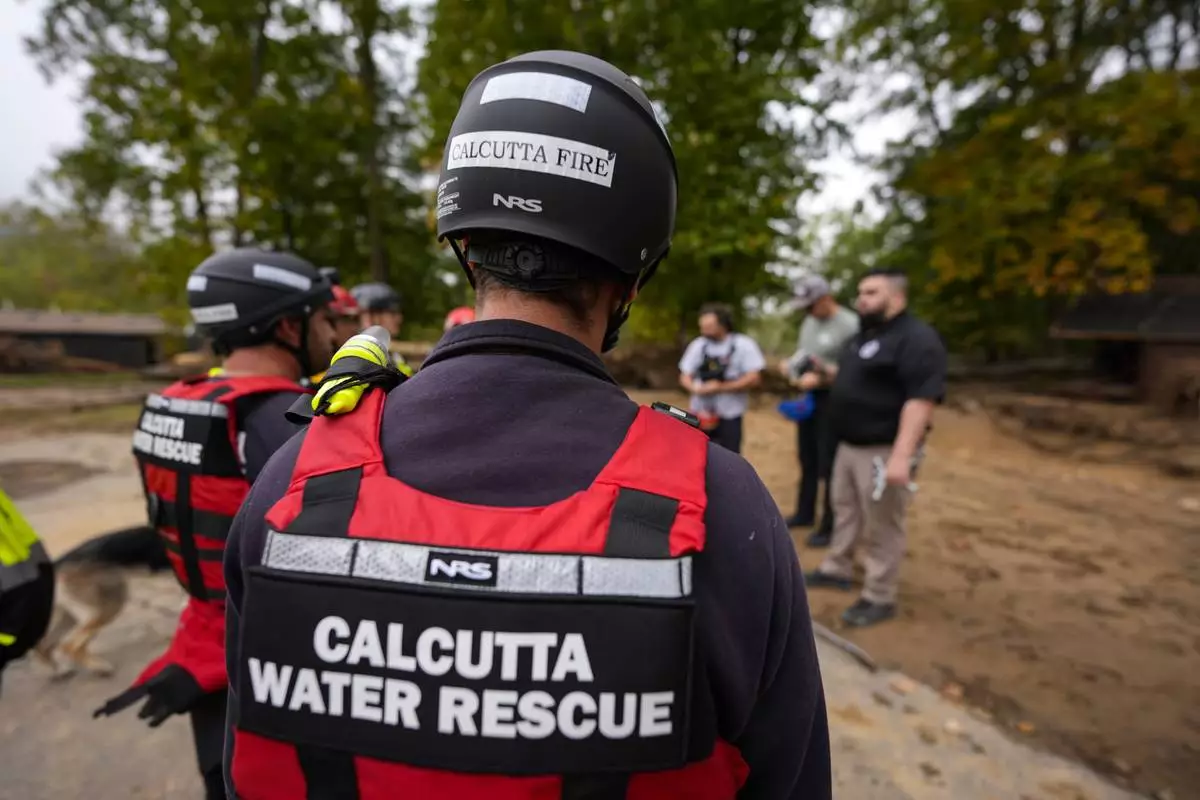
Search and Rescue members take a briefing in the aftermath of Hurricane Helene, Tuesday, Oct. 1, 2024, in Swannanoa, N.C. (AP Photo/Mike Stewart)
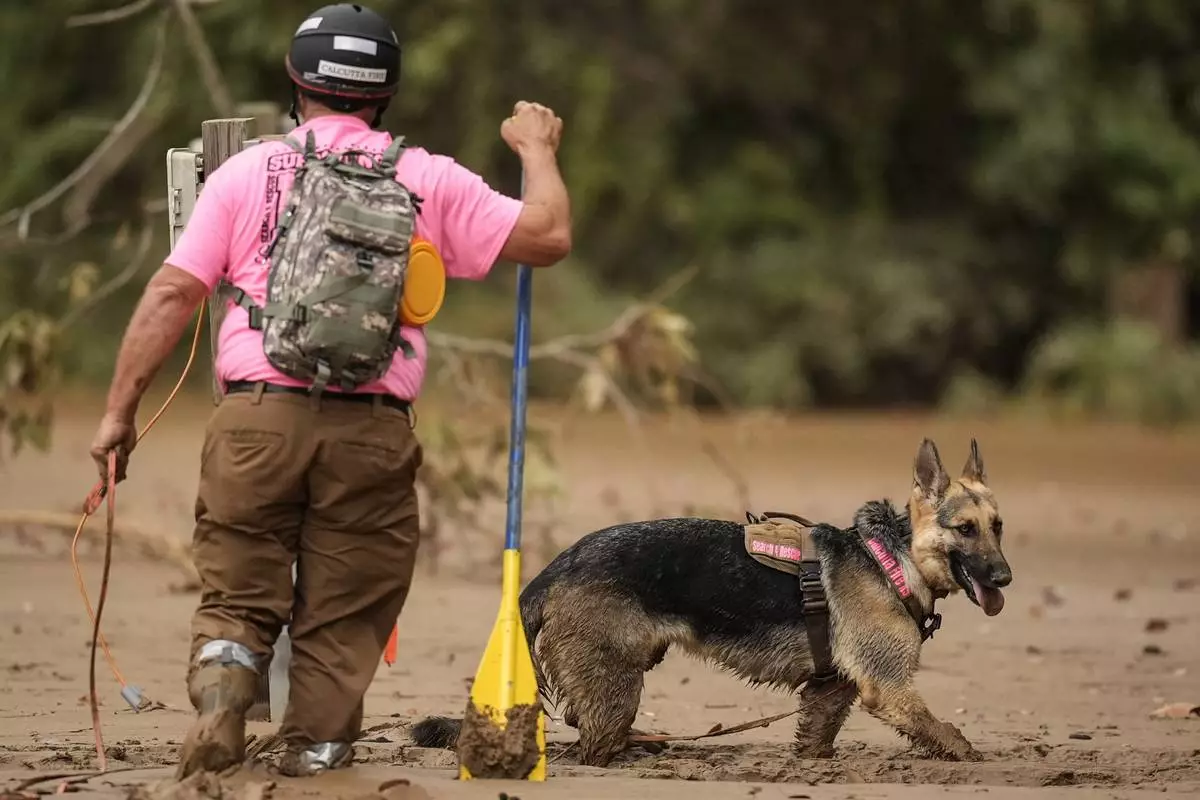
FILE - A search and rescue dog and handler look for victims in deep mud in the aftermath of Hurricane Helene, Oct. 1, 2024, in Swannanoa, N.C. (AP Photo/Mike Stewart, File)
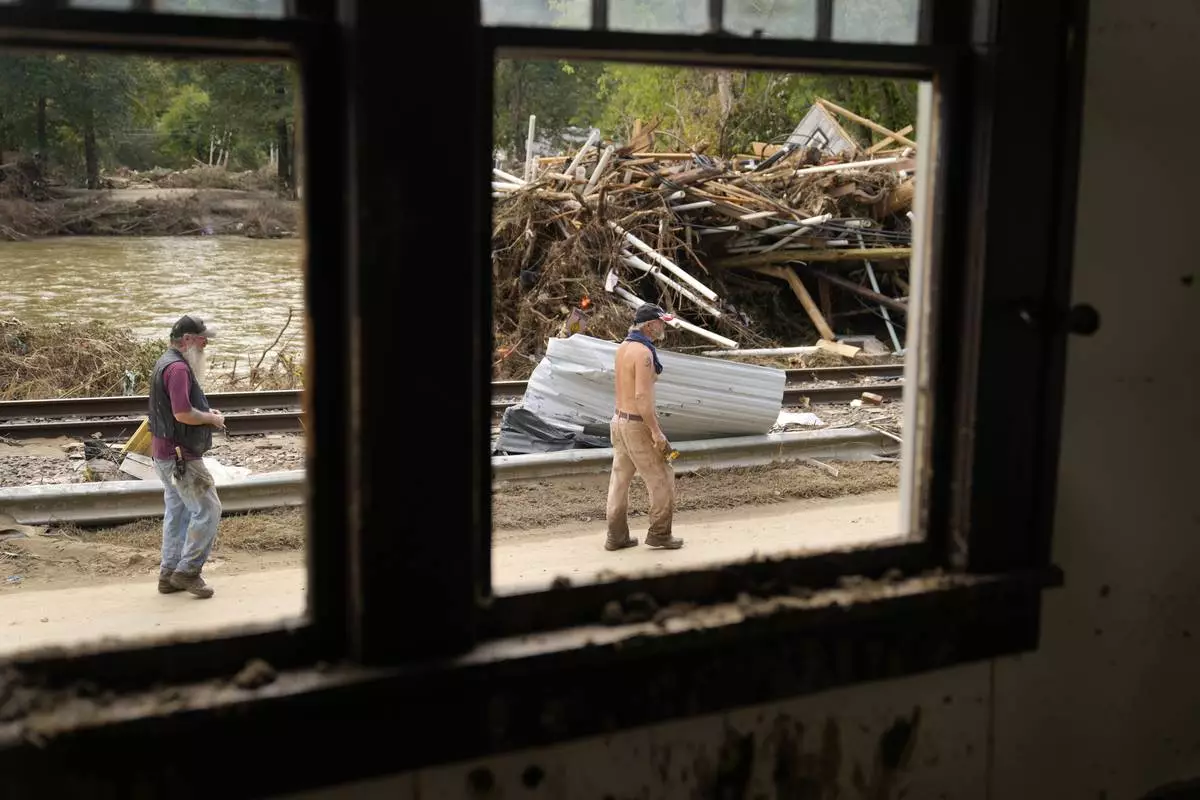
FILE - People walk by a pile of debris left in the wake of Hurricane Helene, Oct. 1, 2024, in Marshall, N.C. (AP Photo/Jeff Roberson, File)
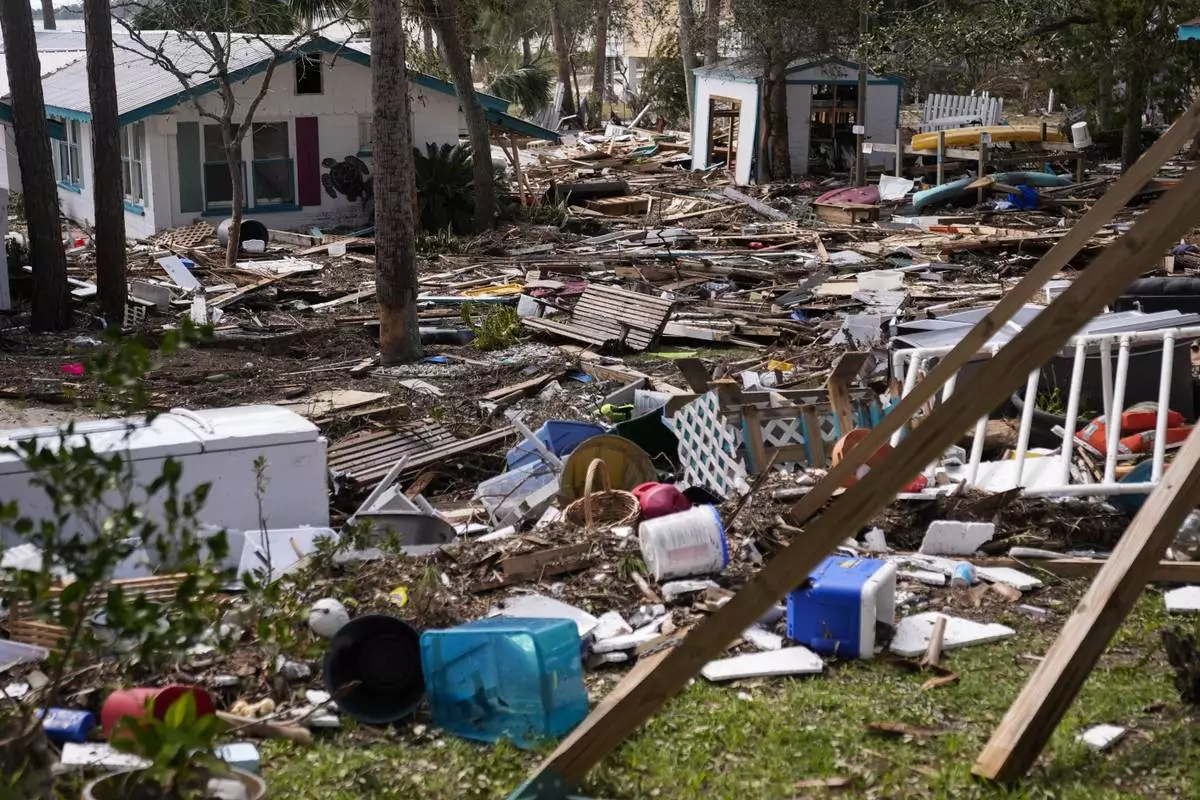
FILE - Destruction to the Faraway Inn Cottages and Motel is visible in the aftermath of Hurricane Helene, in Cedar Key, Fla., Sept. 27, 2024. (AP Photo/Gerald Herbert, File)

FILE - A fireman walks through mud as they search for victims of flash flooding in the aftermath of Hurricane Helene, Oct. 1, 2024, in Swannanoa, N.C. (AP Photo/Mike Stewart, File)
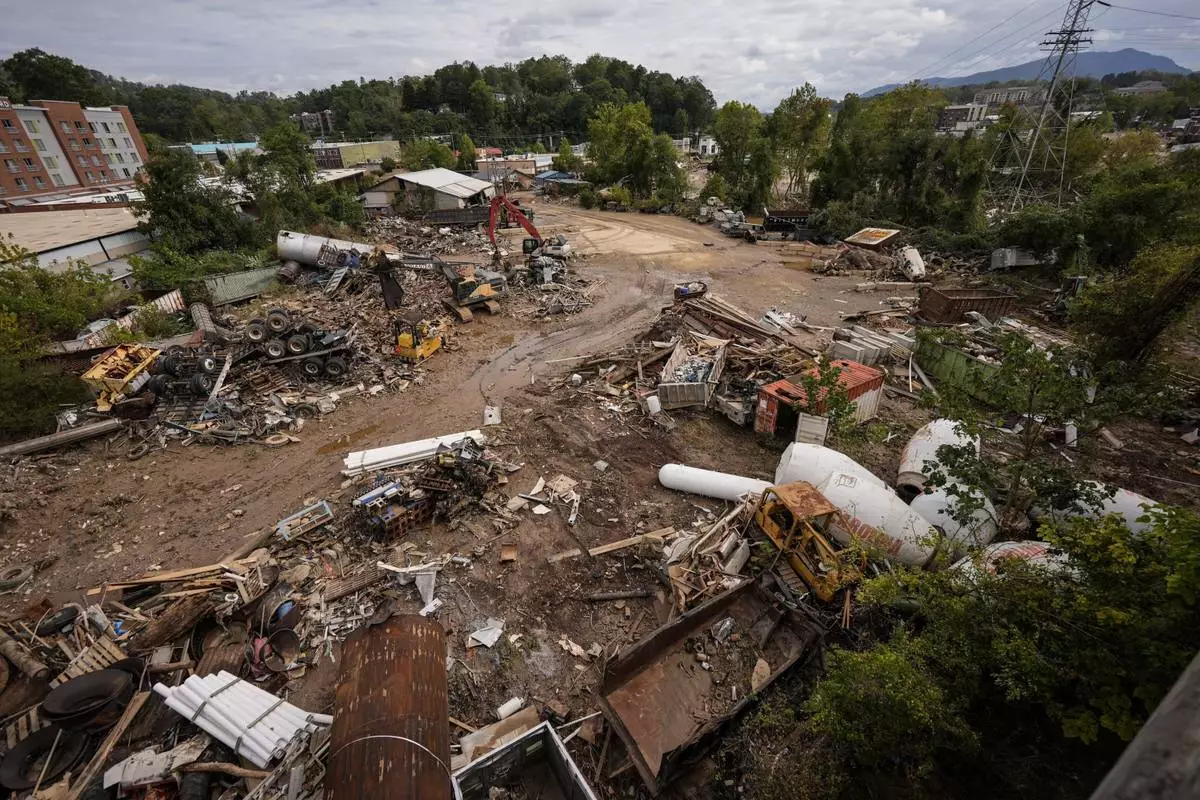
FILE - Debris is visible in the aftermath of Hurricane Helene, Sept. 30, 2024, in Asheville, N.C. (AP Photo/Mike Stewart, File)












